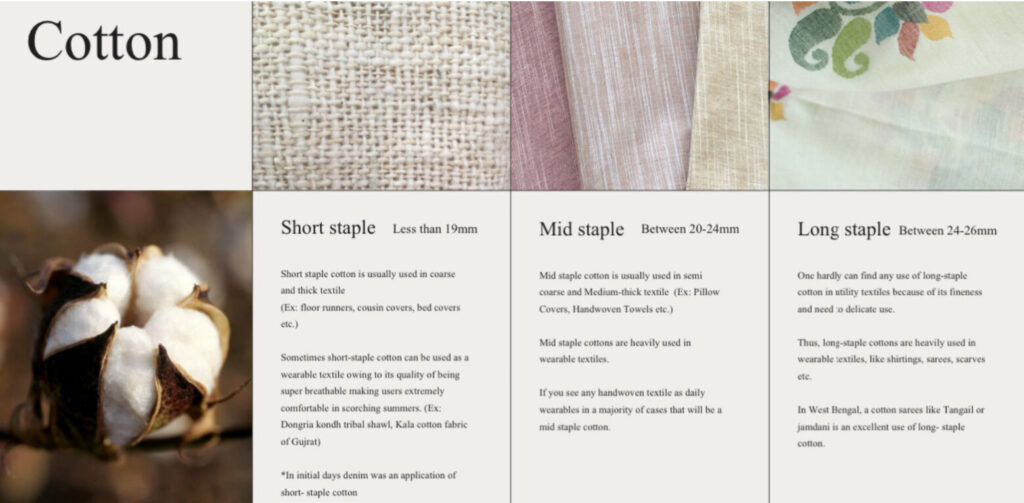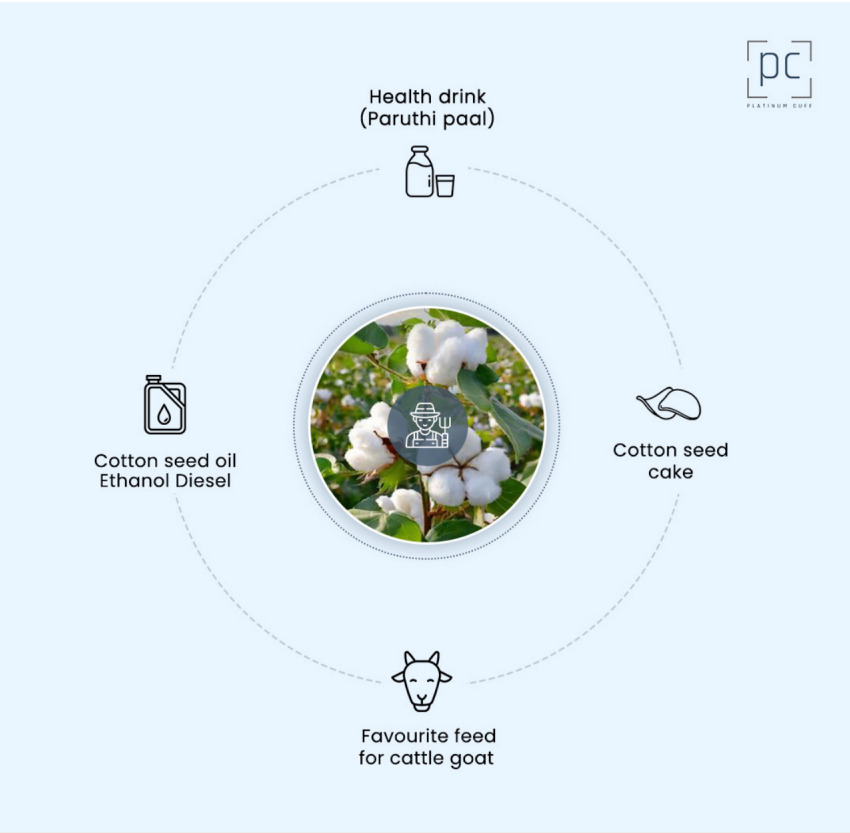Introduction
In a world increasingly focused on sustainable practices, the textile industry is making conscious efforts to reduce its environmental impact. One of the most promising solutions lies in an age-old, yet often overlooked, agricultural practice—rain-fed cotton farming. But what makes this natural method a game-changer for sustainability? The answer is simple: it conserves water, preserves biodiversity, and supports eco-friendly textile production. In India, cotton is more than just a crop—it is a thread woven into the fabric of our heritage, deeply connected to the livelihoods of millions of farmers and artisans.

A Glimpse into Cotton’s History in India
From 3000 BC until the 1750s, India cultivated indigenous cotton varieties—arboreum and herbaceum. Archaeological findings from Mohenjo-daro reveal textiles crafted from these “Old World Cotton” plants. Historically, India’s early market systems were built upon the collaboration between farmers and weavers, who created rich, organic woven textiles known for their soft yet durable texture. This tradition of crafting textiles from locally grown cotton represents a vibrant national legacy of sustainable production—from seed to fabric—entirely on Indian soil.
Varieties of Rain-Fed Cotton in India
Varieties of Rain-Fed Cotton in India
Rain-fed Desi cotton thrives naturally without the need for chemical pesticides. Varieties like Kondapatti cotton grow naturally after being cut back, sprouting from their roots. This resilient crop is integral to improving the livelihoods of tribal smallholder farmers in rain-fed regions. By focusing on Non-GMO seeds, aligned with organic and fair-trade standards, farmers across Maharashtra (Desi Gaurav cotton in Shegaon, Wardha), Telangana (Erra Konda/Kondapatti in Ponduru), and Karnataka (brown cotton near Dharwad) contribute to producing over 90,000 quintals of “A” grade cotton.
Kala Cotton
Indigenous to Kutch, Kala cotton is purely rain-fed and inherently organic. It requires minimal investment and is highly tolerant to disease and pests. Its strong, coarse, and stretchable fiber is often used in denim production. Due to its short staple length, it is harder to spin into fine yarn, leading to its decline in mainstream markets. Yet, it remains a symbol of resilience and sustainable farming.
Suvin Cotton
Suvin is a hybrid cotton developed in India, playing a significant role in the revival of muslin in Bangladesh and India. Historically, muslin was crafted from futi kapas, a native cotton from Bengal, which is no longer available. Suvin serves as a substitute for futi kapas in muslin production during its revival. While there are alternatives like long-staple cotton from Egypt or America, they are prohibitively expensive.
One limitation of Suvin is its inability to spin beyond 500 count, whereas records from the East India Company indicate that futi kapas could be spun to 800-1000 count. Despite this, Suvin remains a viable option for producing fine-quality fabrics and continues to support India’s legacy in high-quality textile production.
Blue and Green Cotton
Historically, regions like Rajapalayam and parts of the Northeast reportedly cultivated blue and green cotton, though these varieties have become rare over time.

Environmental Benefits of Rain-Fed Cotton
- Water Conservation: Cotton is notorious for its water consumption. Conventional farming demands vast amounts of water, but rain-fed cotton eliminates irrigation needs, conserving water—a critical advantage in drought-prone areas.
- Biodiversity Preservation: Rain-fed cotton is cultivated in diverse ecosystems, reducing soil degradation and chemical use. This farming method supports local flora and fauna, enriching biodiversity and fostering ecological balance.
- Lower Carbon Footprint: Without energy-intensive irrigation and with minimal chemical input, rain-fed cotton farming significantly reduces the carbon footprint, supporting global climate action.
Socio-Economic Impact
- . Empowering Farmers
Rain-fed cotton empowers small-scale farmers, reducing their dependency on expensive irrigation systems. Lower production costs mean better income stability and sustainability. - Strengthening Communities
By supporting rain-fed cotton, textile brands contribute to rural development. Farmers receive a 15% premium above regional market prices, ensuring fair compensation. Local cooperatives also involve farmers in decision-making, providing a purchase guarantee for their organic harvests.
Intercropping and Natural Intelligence
In rain-fed regions, cotton is often intercropped with Arhar (pigeon pea), a nitrogen-fixing and commercial crop. This method naturally enriches the soil and increases farm resilience. Interestingly, livestock like cows instinctively prefer cotton and Arhar seeds due to their high nutritional value.

The Human Touch in Cotton Production
From the cotton boll to the final hand-spun, handwoven fabric, rain-fed cotton passes through many skilled hands. Each step involves artisans and masters whose craftsmanship breathes life into every thread, preserving cultural heritage and craftsmanship.
Kabira Tex’s Commitment to Sustainability
At Kabira Tex, we proudly support indigenous cotton farming and rain-fed agriculture. By choosing Non-GMO seeds and collaborating with local farmers, we honor age-old traditions while fostering sustainable practices. Our textiles are not just products—they are woven stories of resilience, culture, and environmental responsibility.
Conclusion
Rain-fed cotton stands as a beacon of sustainable farming—balancing tradition, environmental care, and social empowerment. By embracing rain-fed cotton, we protect natural resources, uplift farming communities, and weave a better future for the textile industry.
Join Kabira Tex in celebrating and supporting sustainable practices that make a difference.
Explore Our Collections at www.kabiratex.com
